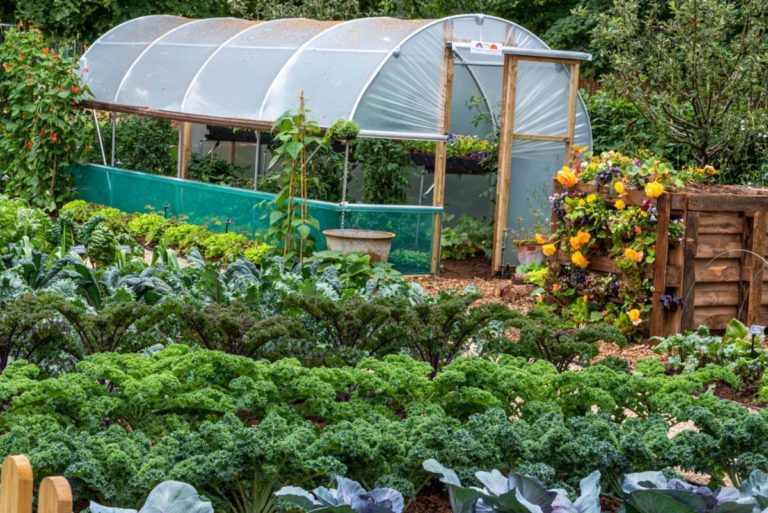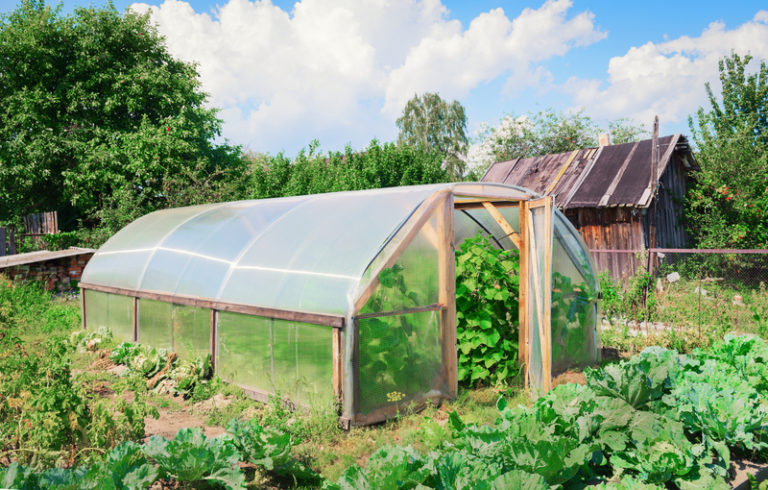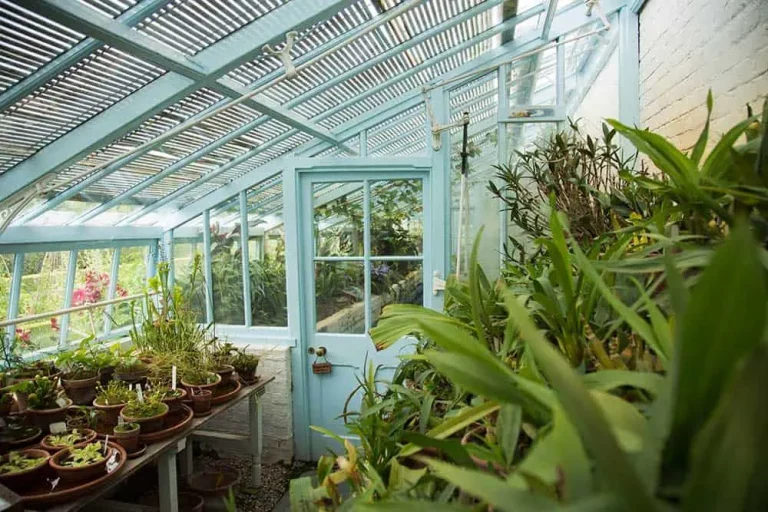If you’re tired of spending hours tending to your garden only to see it wither and die in the heat of summer, then it’s time to build a low-maintenance, drought-tolerant garden.
With the right plants, soil, and irrigation system, you can create a beautiful and thriving garden that requires minimal upkeep and can survive even the hottest days of summer.
We’ll show you how to build such a garden from scratch, including tips on choosing drought-resistant plants, preparing your soil for optimal drainage, and installing an efficient irrigation system.
Choose the right plants
Select plants that are native to your region or have low water requirements. These can include succulents, cacti, grasses, and shrubs that are adapted to dry conditions.
These plants are more likely to thrive in dry conditions and will require less maintenance and watering.
Succulents, cacti, grasses, and shrubs that are adapted to dry conditions are great options for a water-wise garden.
Succulents such as aloe, agave, and echeveria are perfect for hot and dry climates, while cacti like prickly pear and hedgehog can tolerate extreme heat and drought.
Grasses like buffalo grass and blue grama require minimal watering and are ideal for lawn alternatives.
Shrubs like lantana and jasmine require less watering and provide a beautiful pop of color in the garden.
By selecting plants that are well-suited to your region’s climate, you can create a thriving and low-maintenance water-wise garden.
Use mulch
Mulch helps retain moisture in the soil and discourage weed growth. Use organic materials like wood chips, straw, or bark to keep the soil cool and retain moisture.
Using mulch in your garden is an excellent way to retain moisture in the soil and discourage weed growth.
Organic materials like wood chips, straw, or bark work particularly well, as they not only retain moisture but also help to regulate soil temperature.
By keeping the soil cool, mulch can prevent overheating, which can be especially important during hot summer months.
Mulch acts as a barrier between the soil and the sun’s rays, reducing evaporation and preventing soil erosion.
As a result, mulch can help to keep your soil consistently moist, promoting healthy plant growth and reducing the need for frequent watering.
To get the most out of your mulch, make sure to apply a thick layer – at least 2-3 inches – and replenish it as needed.
By incorporating mulch into your gardening routine, you’ll not only improve the health of your soil, but also contribute to a more sustainable and water-efficient garden.
Implement drip irrigation
Drip irrigation delivers water directly to the roots of the plants, minimizing waste and evaporation. This is a more efficient and effective way to water your garden.
Implementing drip irrigation in your garden can significantly improve the efficiency and effectiveness of your watering schedule.
Unlike traditional sprinkler systems, drip irrigation delivers water directly to the roots of the plants, minimizing waste and evaporation.
This method of irrigation allows for a more targeted and precise delivery of water, ensuring that each plant receives only the amount of water it needs.
Drip irrigation reduces the amount of soil compaction and runoff, which can damage the soil structure and contribute to erosion.
By implementing drip irrigation, you can save water, reduce maintenance, and improve the overall health and productivity of your garden.
To install a drip irrigation system, you will need to purchase the necessary components, such as drip tape or drip lines, and fittings, and lay out the system according to the specific needs of your garden.
With proper installation and maintenance, drip irrigation can be a highly effective solution for watering your garden.
Incorporate rainwater harvesting
Collect and store rainwater in a designated tank or cistern. This will allow you to use rainwater for irrigation instead of tap water.
Collecting and storing rainwater is a simple yet effective way to conserve water and reduce your reliance on municipal water supplies.
By installing a designated tank or cistern, you can collect and store rainwater during periods of heavy rainfall, which can then be used for irrigation purposes.
This is especially useful for gardens, lawns, and other plants that require frequent watering.
Not only does this help to conserve potable water, but it also reduces the amount of stormwater runoff that can cause erosion and pollution in our waterways.
Using rainwater for irrigation can help to improve the health of your plants, as it is free of chemicals and other impurities that may be present in tap water.
Overall, incorporating rainwater harvesting into your landscaping plan is a simple yet effective way to reduce your environmental footprint and save money on your water bills.
Create a layered landscape
Plant groundcovers, shrubs, and trees to create a layered landscape that maximizes space and minimizes weeds. This will also create a more visually appealing garden.
Creating a layered landscape is an effective way to maximize space and minimize weeds in your garden, while also creating a visually appealing space.
By incorporating a variety of plants with different growth habits and textures, you can create a multi-dimensional landscape that adds depth and interest to your outdoor space.
Begin by planting groundcovers, such as creeping thyme or sedum, in areas where foot traffic is heavy or where soil is difficult to access.
These low-growing plants can help to suppress weeds and provide a soft, lush surface for bare feet to walk on.
Next, incorporate shrubs and small trees into your landscape to add height and structure to your garden.
These plants can be placed in strategic locations to provide shade, define different areas of your garden, or create a sense of privacy.
Choose plants that are well-suited to your climate and soil type, and consider their mature size when selecting species.
Add trees to your landscape to provide shade, structure, and a sense of scale to your garden.
Choose trees that are well-suited to your climate and soil type, and consider their eventual size when selecting species.
By layering different plants in this way, you can create a beautiful and functional outdoor space that is minimally maintenance and highly enjoyable.
Embrace the beauty of imperfection
A drought-tolerant garden may not look as lush and green as a traditionally watered garden. Embrace the beauty of imperfection and allow your plants to grow at their own pace.
In a drought-tolerant garden, the emphasis is on allowing plants to grow at their own pace, rather than forcing them to conform to a predetermined idea of perfection.
This means embracing the natural imperfections of the plants, such as wrinkled leaves or stunted growth, and celebrating them as a sign of resilience and adaptability.
By accepting these imperfections, you’ll be able to create a garden that is not only beautiful, but also sustainable and self-sufficient.
This approach also allows for a greater diversity of plants, as you’re not limited to just those that thrive in ideal watering conditions.
The end result is a unique and dynamic garden that reflects the natural cycles of growth and decay, and invites you to appreciate the beauty of nature in all its forms.
Use efficient watering techniques
Focus on deep but infrequent watering, rather than frequent shallow watering. This encourages deep root growth and makes plants more resilient to drought.
Using efficient watering techniques is a important step towards creating a drought-resilient garden.
Instead of frequent shallow watering, focus on deep but infrequent watering.
This approach encourages deep root growth, which in turn makes plants more resilient to drought.
By deep watering, you are simulating the natural watering patterns that plants would receive in the wild.
This technique helps to develop a robust and efficient root system, allowing plants to access more water and nutrients from the soil.
As a result, your plants will be better equipped to withstand periods of drought and will require less frequent watering.
To implement this technique, consider investing in a drip irrigation system or soaker hose, which delivers water directly to the roots of the plants, reducing evaporation and runoff.
By adopting this efficient watering technique, you’ll not only save water but also promote healthier and more resilient plant growth.
Monitor and adjust
Monitor your garden regularly and make adjustments as needed. This may include adjusting watering schedules, adding or removing plants, or incorporating additional drought-tolerant techniques.
To ensure your garden thrives, it’s important to monitor it regularly and make adjustments as needed.
This includes checking soil moisture, observing plant health, and adjusting watering schedules accordingly.
If you notice any signs of stress or pests, take prompt action to address the issues before they escalate.
Consider incorporating drought-tolerant techniques, such as mulching or using drought-resistant plants, to help your garden adapt to changing weather conditions.
By consistently monitoring and adjusting your garden’s care, you can ensure it remains healthy and productive throughout the growing season.
Want More? Dive Deeper Here!
Hey there! If you’re the type who loves going down the rabbit hole of information (like we do), you’re in the right spot. We’ve pulled together some cool reads and resources that dive a bit deeper into the stuff we chat about on our site. Whether you’re just killing time or super into the topic, these picks might just be what you’re looking for. Happy reading!






